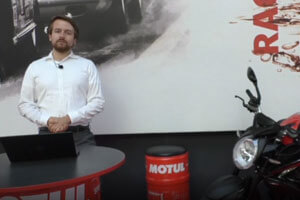
What is a PIM System?
PIM is short for Product Information Management. A PIM system is a software solution that helps you collect, enhance, and distribute product information in a centralized, efficient, and media-neutral manner. The processed data can then be delivered to your company's various sales channels in the appropriate format, such as print/online catalogs, online stores (e-commerce) or applications.
Read all about PIM here. We would also be happy to show you our PIM system ANTEROS in action, free of charge and without obligation.
With product data becoming increasingly important in the course of digitalization, more and more businesses are recognizing the usefulness of central databases to collect, enrich and output data. These are known as PIM systems, or PIM software.
PIM software simplifies the management of product information. It centralizes the organization of product data and enables efficient multi-channel distribution.
PIM systems provide companies with the ability to manage product data centrally in one place and use it in a variety of ways. Similar to ERP systems, PIM systems now play a fundamental role in companies. They can increase sales efficiency, optimize marketing strategies, ensure consistent customer communication and improve internal processes.
Typical applications (use cases) are:
|
|
Collect Data
First product data is collected from various sources. These include, for example, suppliers, ERP systems, catalogs, websites and social media. The data can be in different formats, such as an Excel spreadsheet, PDF or XML. This external data is prepared and either input into the system, or automatically imported via interfaces from the PIM to these external systems.
Refine Data
Next, the data must be refined. This means that it is checked for completeness, accuracy and consistency. The data is enriched with images which are usually taken from a dedicated media database. High data quality is ensured via quality reports and quality management, which allows a quick overview of data quality via a dashboard. The process of refining the data is supported by workflows, with which different employees are assigned appropriate tasks and rights meaning that processes are configured appropriately.
Output Data
In the third step, the refined data is exported to the desired output channels, often via interfaces. This data can then be used to generate print documents, product labels, apps, online shops, information portals, or more.

Marco Lombardo,
Head of Business Processes & Digitalisation at MC Bauchemie
"With PIM, we've simply made it possible to have all the information around the product in one system."
What Benefits Does a PIM System Offer Your Company?
Internal benefits
| External benefits
|
Web: Websites, Online catalogs, Online Stores and Product Portals
In order to use the centrally maintained product data and images from your PIM for ecommerce such as websites, online catalogs, online shops or product portals, all PIM systems offer interfaces to ecommerce and shop systems, such as Shopware, Intershop, Magento, ... Some also have their own ecommerce module, like , which can be fully integrated into your ERP system (SAP, Navision, ABAS, Infor, ...) via a web service interface.
Apps: for App Stores and Web Apps
A few suppliers also offer an app with which their customers can specifically search for their products, compare them and then request or order them. ANTEROS offers the webshop functions not only for Android and iOS, but can also be customized as required, e.g. with a photo function to find the right product in the shop with the photographed spare part (INCONY has implemented this for TMD Friction).
Comparison of the semi-automated and fully automated approach to print generation in the PIM
Print: Catalogs, Price Lists and Data Sheets
In the digital age, sales documents such as catalogs, price lists and data sheets are still important, even if they are not often provided to customers in printed form but as PDF files. PIM systems offer two technologies for creating documents:
|
|

What a waste of resources;
Changing product data on all platforms is extremely time-consuming.

Redundant data maintenance leads to errors, poor data quality, less customer satisfaction;
Changing product data on all islands means errors are inevitable
Why do You Need a PIM System?
In today's economy, companies face the following challenges in data management and sales:
|
|
INCONY: The PIM and Cross Media Specialist
INCONY is a German software company that has been developing PIM and cross-media software for over 20 years. ANTEROS, INCONY's PIM and cross-media solution, supports companies in the management and use of product data. ANTEROS can merge, cleanse and harmonize product data from different sources. The software also offers functions for creating marketing and sales materials for print, online and mobile. INCONY has customers across various industries and of a range of sizes in Germany, Europe and around the world. The company has already received several awards.
Would you like to experience the ANTEROS PIM software yourself?
Find out how ANTEROS can optimize your product management in a guided demo by one of our PIM experts.
User Reports
Read testimonials from companies such as Poloplast, Motul and Zeppelin that use ANTEROS. Find out how the PIM systems were implemented in the companies, how the employees were involved and what the benefits are.
Benefit from the experiences of other companies!









